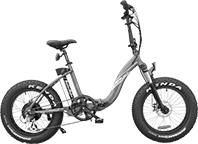The main technical parameters of three-stage charger are constant current, maximum voltage, conversion current and floating charge voltage. The highest voltage and the conversion current are two important parameters to decide whether a battery can be adequately charged or overcharged. The constant current value is within a certain range, and it only determines the length of time needed for sufficient electricity.
However, the floating charge voltage has little effect on the charging degree of the battery of best electric bike 2013 as long as it is not deviated from a wide range and does not float for a long time. The parameter required for a specification battery pack must be a range value, and for each charger, it must be a value.
Take 36v / 10ah charger as an example, the maximum voltage requirement is 44.1-44.7v, and the conversion current requirement is 350-400ma.
In selecting the parameters of the charger, the high voltage and the conversion current should be chosen in parallel, that is, the maximum voltage should be chosen as the lower limit, and the conversion current should also take the lower limit value and the maximum voltage to take the upper limit value. Then the conversion current should also take the upper limit. This is a better choice.
On the other hand, if the lower limit is 44.1 vg for high voltage and the upper limit for conversion current is 400mag, the battery pack will be undercharged in winter and the battery will be powerless when driving.
Judging from the current market reaction, there are more charger manufacturers according to this method, the purpose of which is to avoid battery expansion and reduce trouble, but there is a problem of insufficient battery charge. If the upper value of the high voltage is 44.7 VX and the switching current is lower than 350 Ma, the overcharge of the battery in summer will be large and the battery will expand easily.


